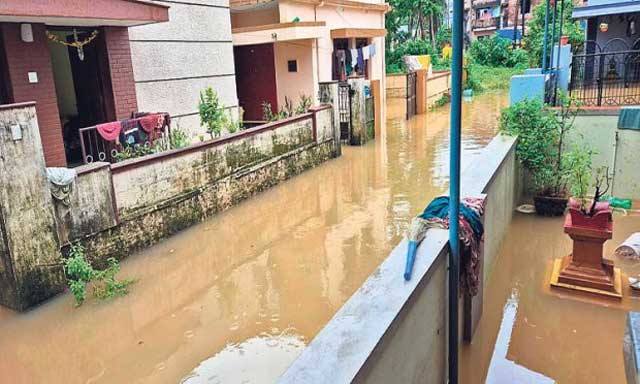Daijiworld Media Network – Mangaluru
Mangaluru, July 20: The coastal belt of Karnataka has been witnessing intense and continuous rainfall in recent days, and this year, more than 50% of the region’s average monsoon rainfall has already been received just halfway into the season.
Typically, the monsoon season in the region spans from June to September, during which the combined average rainfall expected for Dakshina Kannada, Udupi, and Uttara Kannada districts is around 3,101 mm. However, in just one-and-a-half months, the region has recorded 1,637 mm of rainfall — a 9% increase over the normal.

Representational image
District-wise increase
So far, Dakshina Kannada has received 1,789 mm rainfall compared to its average of 1,649 mm — a 9% rise. Udupi has recorded 2,145 mm against the usual 1,955 mm (10% increase), and Uttara Kannada has reported 1,388 mm compared to its 1,273 mm norm, also marking a 9% increase.
Sullia, Kundapur witness highest rainfall
In Dakshina Kannada district, Bantwal has seen 26% excess rainfall over the norm, Sullia 22%, Moodbidri and Kadaba 12% each. In Udupi district, Karkala, Kundapur, and Udupi have recorded 12% excess, Byndoor 14%, Brahmavar 10%, and Kaup 9%.
However, some areas have seen rainfall deficiency — Belthangady (-15%), Puttur (-2%), Mulki (-4%), Ullal (-1%), and Hebri (-4%). Mangaluru city has recorded average rainfall so far.
Monsoon arrived early
The southwest monsoon, which usually arrives in Kerala in the first week of June and subsequently moves up the coast, entered Karnataka earlier than expected this year — on May 24. Despite the early onset, the monsoon has remained consistent across the coastal region.
According to the Indian Meteorological Department, more rain is expected in the coming days, and the region may receive the full average quota of monsoon rainfall by the end of the season, similar to last year.
Coastal Karnataka monsoon rainfall over the years (Average: 3,101 mm)
-
2018: 3,104 mm (0% variation)
-
2019: 3,734 mm (+20%)
-
2020: 3,458 mm (+12%)
-
2021: 2,692 mm (-13%)
-
2022: 3,107 mm (0%)
-
2023: 2,514 mm (-19%)
-
2024: 3,101 mm (expected +20%)